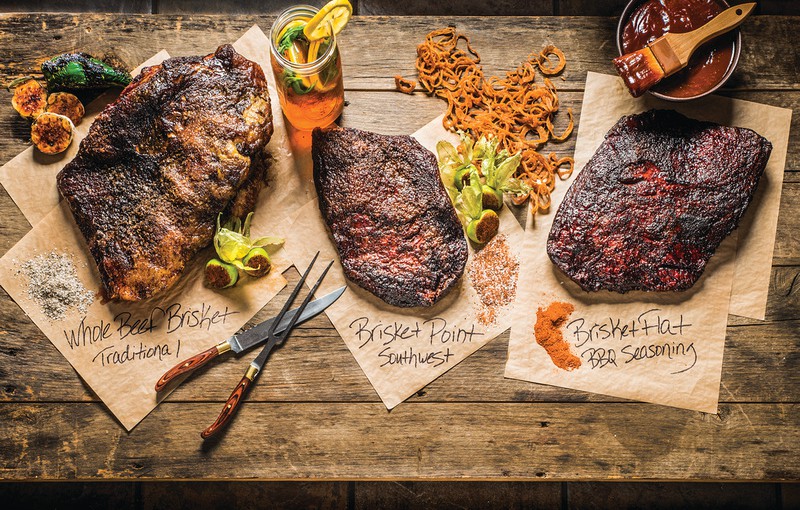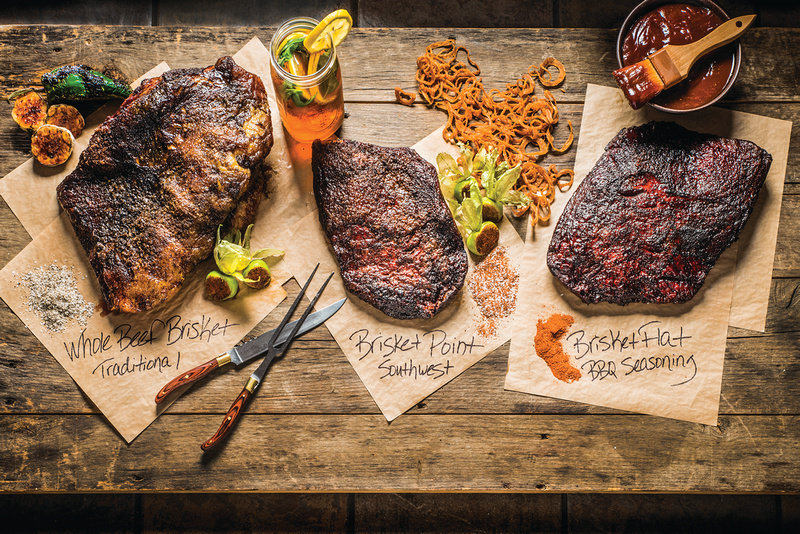Slow and fork-tender smoked brisket has gained fame across the country as a barbecue favorite, and the claim to fame of many renowned pitmasters. As summer heats up, the beef experts with the Certified Angus Beef ® brand have tips for making mouthwatering brisket on the grill at home.
To achieve restaurant-quality results, it’s important to start with the same high quality beef. Specifically, brisket should be highly marbled and full of the little flecks of flavor within the meat that will melt when cooked low and slow, “basting” the brisket from the inside-out and ensuring maximum flavor.
“When selecting beef, marbling equals flavor,” explains Randy Pauly of Holy Cow Cookers, an eight-time barbecue cookoff grand champion. “When you choose the Certified Angus Beef ® brand, you instantly add one extra layer of flavor because of that marbling.”
To earn the brand name, Angus beef must meet 10 exacting quality specifications – the most important of which is a high degree of marbling. As a result, each cut is abundantly flavorful, incredibly juicy and full of flavor.
Once you select the perfect brisket (find markets featuring the Certified Angus Beef ® brand here) it’s time to consider technique. Authentic smoked brisket can be achieved on any grill, with the addition of a smoker box. This inexpensive metal box is perforated with holes, which allows wood chips to release smoke when heated.
- Fill the box with wood chips soaked with water
- Place it on or near the heat
- Keep the grill temperature on the cool side, between 225°F and 275°F.
Once the meat is placed on the grill, the smoke will circulate under the closed lid, infusing the flavor as the brisket cooks low and slow for several hours. Chef Michael Ollier offers these additional tips to elevate your backyard smoked brisket even further:
Make the bark part of the bite.
Bark, the tasty dark crust that forms on smoked meats, is a delicious and important part of the eating experience. And, it’s achieved through the liberal application of a rub before the brisket meets the smoke. This rub can be as simple as coarse black pepper and kosher salt – or as inventive as you like.
“Avoid having too much fine powder in your rub, though, as that has the potential to get pasty as it cooks,” Ollier advises. He recommends the Angry Texan rub as a great recipe.
Wrap the brisket during the final stages of cooking.
Wrapping the brisket in foil towards the end of its cooking time helps retain its moisture and juiciness, says Ollier.
“I’ve been taught that meat only takes on smoke until its internal temperature reaches 140°F, but I don’t have the heart to take it off the heat that early. I’ll wait and pull it at 170°F. Then, I believe wrapping it in foil – some call this the ‘Texas Crutch’ – helps retain moisture. I continue cooking the brisket until it reaches a final internal temperature of 185°F,” Ollier explains.
Give it a rest.
Once the smoked brisket is done cooking, there are two stages of resting. During the first, it relaxes for 10 to 15 minutes away from any heat. Then, Ollier recommends the brisket – tightly wrapped in foil – should go into a 175°F oven, for at least an hour before slicing.
Don’t forget the burnt ends. Once considered a scrap left on the cutting board, burnt ends – the cubed pieces from the top cap or “point” of the brisket – are now considered a delicacy among barbecue aficionados and experts. These small, flavorful cubes of meat are seared or double-smoked, then tossed with recovered drippings and sometimes sauce.
“If you want to make burnt ends, but don’t want to cook a whole brisket, start with a brisket point trimmed down to ¼ inch of exterior fat,” says Ollier.
He recommends using burnt ends in this recipe for Block Party Brisket Beans.
For more recipes and retail locations near you, visit CertifiedAngusBeef.com.




I like my brisket to have a solid meat not spongy like some people. How long should i cook it for and at what temperature.
I’ve GOT to try a brisket smoked this way. Patience pays off!